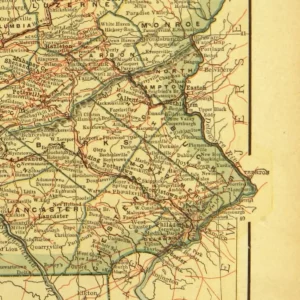
Introducing an impactful and engaging newsletter requires careful planning and attention to detail. Unlike websites, newsletters offer a unique opportunity to connect with a targeted audience on a regular basis, delivering focused content directly to their inboxes. We’ve seen newsletters range from bare-bones to a near-copy of the sender’s website. Many guides online these days nudge business owners towards the latter when planning a newsletter or newsletter template.
By crafting compelling subject lines, tailoring content to specific interests, and incorporating persuasive calls to action, a well-planned newsletter can foster strong reader engagement and drive desired outcomes. In this guide, we’ll explore the key considerations and best practices for planning a successful newsletter that has the look and feel of your site but differs in key ways for the better.
What We'll Cover
The Key differences
When planning a newsletter, there are several key differences to consider over how you would plan a new webpage. Both have unique audiences, goals, and technological considerations. It’s important to keep in mind how these audiences and objectives differ, in addition to the technology. Here are some important aspects to keep in mind:
Content Focus
Websites cover all aspects of your operation. They are designed to give a broad overview of your business, products, or services. You should consider a website to be a one-stop shop for anything your visitor needs, including from your other marketing channels. It serves as a resource for visitors to find various types of information, from general answers to your value proposition.
A newsletter usually has a more specific focus or theme that can vary greatly with each email. Each issue should have a clear objective, whether it’s to promote a product, share company news, or provide valuable content like tips or industry insights. Identify this purpose before you start creating your newsletter. Determine the purpose as it relates to your target audience, and tailor the content accordingly to ensure it remains relevant and engaging. Otherwise, you risk readers clicking elsewhere.
Frequency and Timing
Timing and frequency for updates are less critical for website changes. It’s critical that you maintain your site as “the source of truth”, so you do not want to sit on critical information until a certain time if your current content is obsolete. An exception is if you have a product launch or service update.
Newsletters are often sent on a regular basis, such as weekly, bi-weekly, or monthly. Consider the frequency that suits your content and audience’s expectations. Preferably, keep the frequency consistent unless you have an important alert that cannot wait for the next issue. Additionally, timing is crucial for newsletters. They should be sent at a time when recipients are more likely to engage with them, such as during weekdays and non-busy hours.
Length and Format
Newsletters should be concise and easy to read. Unlike websites, newsletters benefit from brevity. Consider using short paragraphs, bullet points, headings, and relevant images or video to make your content visually appealing and easy to consume.
So, why do websites benefit from more content? Sites serve as your primary point of reference for your customers. Newsletters pointing to your site to “read more” should land on pages where there is, well, more. Your site pages should be comprehensive and answer any question on the topic at hand. Additionally, including more, relevant words can be picked up by search engines, benefiting your SEO.
Design and Layout
Newsletters are often structured in a single column to facilitate reading across different devices and email clients, while websites can be optimized for viewing in different ways on different devices. Pay more attention to visual hierarchy, font choices, and use of white space to ensure a clean and organized layout.
Call to Action
Your newsletter should drive a specific action. This can include clicking on a link, signing up for an event, or making a purchase. Incorporate clear and compelling calls to action (CTA’s) in your newsletter design to encourage recipients to take the desired actions. Remember, a newsletter is like a one-page site. Your website, on the other hand, can serve multiple purposes and have several CTA’s depending on your audience. Websites serve as a roadmap where the customer journey can occur over several pages.
Personalization and Segmentation
Newsletters provide an opportunity for greater personalization and segmentation that can evolve over time as you send them. Many newsletter tools allow you to break your subscribers into multiple lists, or segments. Consider segmenting your subscriber list based on their interests or preferences and tailor the content accordingly. Over time, you can tailor your messaging based on analytics (such as open and click-through rates) to maximize engagement.
Personalization can enhance engagement and make recipients feel more connected to your brand or organization. In a competitive marketplace, fostering this connection should be a priority.
Metrics and Analytics
While websites offer robust analytics tools, newsletters typically have more limited tracking capabilities. However, you can still track metrics such as open rates, click-through rates, and conversions. Your web analytics can also track user behavior upon their arrival on your website from your newsletter. This information can be “stitched” together to create a comprehensive customer journey to aid in your marketing efforts. Use these metrics to gauge the success of your newsletter campaigns and make data-driven decisions for future improvements.
One often overlooked benefit of newsletter analytics tools is their ability to facilitate rapid and discreet iteration. Unlike websites, which require significant planning and analysis to determine optimal improvement timelines, newsletters allow for more agile adjustments based on immediate feedback. This means you can quickly test and refine your content, improving engagement with each issue.
The best of both worlds
You don’t have to reinvent the wheel when it comes to your content. Some segments of your audience may prefer to use your website, while some prefer your newsletter. Others still may prefer your social media and yet others may be old-school RSS fans. You can push your newsletter to your site blog, to your social accounts, and have RSS enabled on your website. That way, everyone can receive your latest updates in a format they prefer.
Thinking strategically
Crafting a newsletter is more than just assembling content; it demands a strategic approach to ensure that the material you share is not only valuable but also engaging for your audience. It’s essential to remember that a well-planned newsletter can significantly enhance your communication with subscribers. By taking into account the various factors that differentiate an average newsletter from a great one, you can greatly improve its impact. Ultimately, by focusing on these key differences, you’ll be able to maximize your newsletter’s effectiveness and meet your communication objectives more efficiently.




